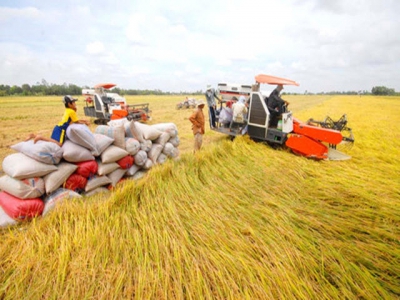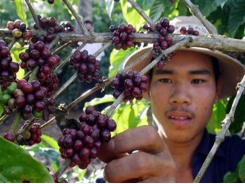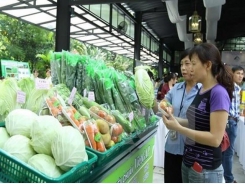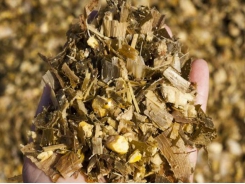Philippine rice tariffication law to benefits Vietnams exporters

In the first four months this year, the Philippines has leapfrogged China to become Vietnam’s largest rice importer.
Instead of limiting how much rice will be imported, the Philippines now will impose tariff on rice at 35% for ASEAN members. The move is expected to have a positive effect on Vietnamese rice exporters, according to Viet Dragon Securities Company (VDSC).

The import tax rate applied for Vietnamese rice is relatively low, fixed at 35% regardless of volume while production costs in the Philippines are much higher than in Vietnam and Thailand, VDSC said in its latest report.
The Philippines has not been able to produce enough rice to feed its own people and has been importing rice for the past 20 years. Last year, before the new regulations, more than half of Philippine rice imports came from Vietnam.
On April 5, Philippine policymakers approved the Implementing Rules and Regulations (IRR) of Republic Act 11203 which lifts the quantitative import restrictions on rice. This act, which came into effect on March 5, was signed by Philippine President Rodrigo Duterte on February 14.
Following changes in regulation, rice imports are now subject to tax rate of 35% for products originating from ASEAN countries, including Vietnam.

Additionally, a tax rate of 40% would be applied for rice imports from non-ASEAN WTO member countries with the minimum access volume (MAV) of 350,000 tons, and 180% above the MAV of 350,000 tons.
“Minimum Access Volume” (MAV) refers to the volume of a specific agricultural product is allowed to be imported with a lower tariff as committed by the Philippines to the WTO under the Uruguay Round Final Act. For instance, rice MAV is 350,000 tons. In case of shortages or abnormal price increases, the MAV Management Committee (MMC) shall recommend to Philippines’ President revisions, modification or adjustment of the MAV for rice.
This regulation is expected to raise rice import from nearby ASEAN member countries and lower prices for the consumer, suggested the report. According to the Philippines’ former Budget Secretary Benjamin Diokno, by tariffication, instead of quantity restrictions, the rice price will decline by about 4 to 7 Philippine peso per kilogram.
The Philippines is a major export market for Vietnamese rice. While China is importing less Vietnamese rice, exports to the Philippines have been increasing since 2016. In 2018, the Philippines became the second biggest importer of Vietnamese rice, after China, accounting for 15% of the total export value. It has imported about 1.01 million tons from Vietnam, worth more than US$457 million, an increase of 83% year-on-year in volume and 105% in value.

In addition, after March 5, traders do not need a Philippines National Food Authority (NFA) permit, license or registration to trade and import rice. They are only required to get the sanitary and phytosanitary import clearance (SPSIC) from the PHL Bureau of Plant Industry. This new regulation is expected to simplify and speed up the import process, stated VDSC.
Regulation changes as mentioned above may boost rice imports into the Philippines, especially those from Vietnam.
In the first four months of 2019, China is no longer the largest buyer of Vietnamese rice. The Philippines had advanced to the top post, having imported 814,484 tons of rice from Vietnam, worth more than US$320 million, up 343% in volume and 290% in value, accounting for 36% of total Vietnam rice export value.
Related news
Tools

Phối trộn thức ăn chăn nuôi

Pha dung dịch thủy canh

Định mức cho tôm ăn

Phối trộn phân bón NPK

Xác định tỷ lệ tôm sống

Chuyển đổi đơn vị phân bón

Xác định công suất sục khí

Chuyển đổi đơn vị tôm

Tính diện tích nhà kính

Tính thể tích ao



 Hanoi urges investment in city’s farming to meet…
Hanoi urges investment in city’s farming to meet…  Fermentation analysis pinpoints silage management
Fermentation analysis pinpoints silage management